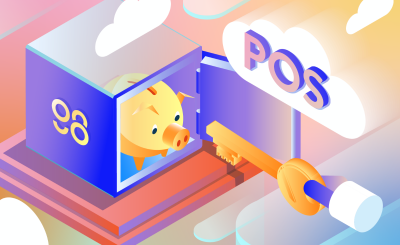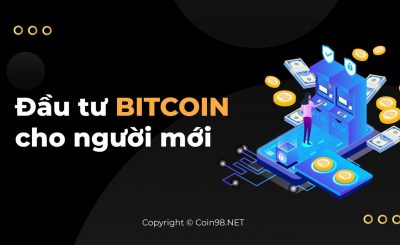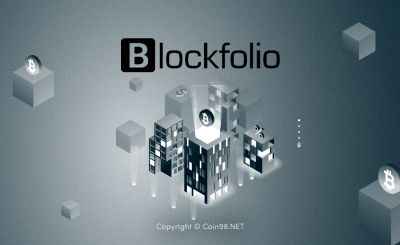You can Solo Mining alone, even if you run some powerful ASICs, but overall, you are just a grain of sand in the “desert” of miners.
The chance for you to actually mine a block is quite small, even though you have spent a lot of money and the amount of electricity needed to run specialized equipment, so for a more stable revenue, joining Mining Pool is not a bad choice.
In this article, we will learn what Mining Pool is, an overview of how it works and the pros and cons of Mining Pool.
What is Mining Pool?
Mining Pool, also known as a mining pool, is a group of miners (miners) gathering together, aggregating the computing power of individual miners to solve the algorithm faster and more efficiently, enhancing mining ability. successfully mined blocks blockchain for block rewards.

How does Mining Pool work?
The following simple example will show how the Mining Pool model works.
Let’s say you and 99 other miners each own 0.01% of the network’s total hashpower. It means:
- On average you will mine one block out of every 10,000 blocks.
- With an average of 144 blocks mined per day, you can mine one block every 10 weeks.
This does not mean that you will definitely mine 1 block every 10 weeks, it is probability. If you are unlucky, 20 – 50 consecutive weeks you will have no income while still having to cover the costs of electricity and specialized mining equipment.

In this case, you can join a mining group with 99 other people. If you all combine your hash power, your pool will have 1% of the network’s hash rate. This means:
- On an average of one hundred blocks, the team will find one block, and possibly one or two blocks per day.
- The reward can then split the reward and share it among all relevant miners.
Looking for more information: What is hashrate? The Importance of Hash Functions in Crypto
Pros and cons of Mining Pool
Advantage
The self-mining option means that you won’t have to share the rewards, but the percentage you get will often be very low because of the high requirements for hardware power and resources.
Join Mining Pool ask for less for each participant in terms of hardware and electricity costs, it Increase your chances of making a profit because it gives a greater chance to mine blocks and win rewards.
Defect
Participating in a Mining Pool means that individuals have given up some of their autonomy in the mining process. They often tied by the terms set by the Mining Pool itself. In addition, miners participating in Mining Pool are also required to share every potential reward.
Besides, a small number of Mining Pools like AntPool, Foundry USD Pool, F2Pool, BTC.com Pool etc. dominate the bitcoin mining process, this could be Threats to Bitcoin’s Decentralization.
In theory, the top four Mining Pools could band together to take control of the network. However, that wouldn’t make much sense. Even if they try to carry out an attack, the Bitcoin price will likely plummet because their actions will sabotage the system. As a result, any coins they acquire will lose value.
04 forms of profit sharing in the Mining Pool model
There are many payment systems in Mining Pool, here are 4 popular payment models that you should know:

Pay-Per-Share (PPS)
PPS is a form of providing an instant fixed payout per share. Under this payment method, miners receive a standard payout rate for each share they purchase.
Each share is worth a certain amount of mineable BTC, after deducting the mining fee, the miners receive a fixed income every day.

Pay-Per-Last-N-Shares (PPLNS)
PPLNS is a form of profit distribution based on the number of shares that miners contribute. This type of allocation method is closely related to mined blocks.
If Mining Pool mines many blocks in one day, miners will get high profit, if Mining Pool can’t mine one block in whole day, miner’s profit for whole day is zero.
In the short term, the PPLNS pattern is highly correlated with group luck. If the group of friends is unlucky, the income of everyone in the group will decrease, of course the opposite can also happen. However, in the long run, the element of luck will not affect too much.

Pay Per Share+ (PPS+)
PPS+ is a blend of the two aforementioned modes, PPS and PPLNS. The block reward is settled according to the PPS model, and the transaction fee is paid according to the PPLNS method.
It means that in this mode, miners can get extra income from part of the transaction fees based on the PPLNS payment method.
Full Pay Per Share (FPPS)
In this mode, both the block reward and the mining service fee are paid according to the theoretical profit. Charge a standard transaction fee for a certain period of time and distribute it to miners according to their hash power contribution in the ming pool. It increases the miner’s income by sharing a portion of the transaction fees.
Some outstanding Mining Pools on the market
Here are some of the biggest Mining Pools on the market by Hash Rate:

Antpool is the largest Mining Pool in the world at the moment, based in China. Antpool provides Mining Pool service for many PoW coin such as: Bitcoin, Ethereum Classic, Litecoin,…. This Mining Pool accounts for more than 20% of the hashrate of the Bitcoin network.
Outside of China, Foundry USA Pool is another prominent Mining Pool in North America. They allow miners to participate in Full-Pay-Per-Share (FPPS) payment form, the income of miners will be quite stable.
summary
Mining Pool is a form of organization that brings many benefits to miners who want to have a more stable income. There are many methods of calculation and distribution of rewards used by mining pools. Therefore, participants need to consider which program is suitable for their purposes before participating.
Disclaimer: All information on this article is for sharing market experience only and should not be considered as investment advice. Crypto investment is a form of risky investment and should only be entered with capital that can be lost.
Source: What is Mining Pool? How it works & Pros and cons of Mining Pool
– TechtipsnReview






